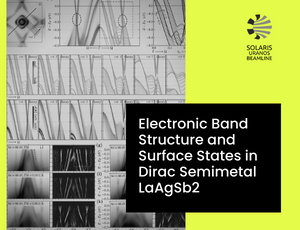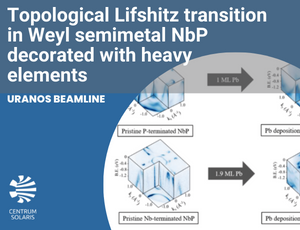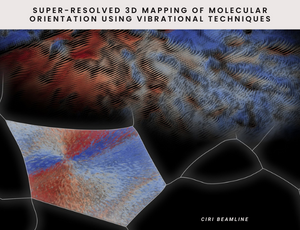
 Web Content Display
Web Content Display
SOLARIS centre
 Web Content Display
Web Content Display
 Web Content Display
Web Content Display
Research
The valance state of vanadium- key factor in the flexibility of potassium vanadates structure as cathode materials in li-ion batteries
03.01.2023
Potassium hexavanadate (K2V6O16·nH2O) nanobelts have been synthesized by the LPE-IonEx method, which is dedicated to synthesis of transition metal oxide bronzes with controlled morphology and structure. The electrochemical performance of K2V6O16·nH2O as a cathode material for lithium-ion batteries has been evaluated. The KVO nanobelts demonstrated a high discharge capacity of 260 mAh g-1, and long-term cyclic stability up to 100 cycles at 1 A g-1. The effect of the vanadium valence state and unusual construction of the nanobelts, composed of crystalline and amorphous domains arranged alternately were also discussed in this work. The ex-situ measurements of discharged electrode materials by XRD, MP-AES, XAS and XPS show that during the subsequent charge/discharge cycle the potassium in the K2V6O16·nH2O structure are replacing by lithium. The structural stability of the potassium hexavandate during cycling depends on the initial vanadium valence state on the sample surface and the presence of the “fringe free” domains in the K2V6O16·nH2O nanobelts.
Read More o The valance state of vanadium- key factor in the flexibility of potassium vanadates structure as cathode materials in li-ion batteries
Nontrivial electronic structure of Dirac semimetal
21.11.2022
Researchers at the SOLARIS Centre have conducted high-resolution ARPES measurements of Dirac semimetal, a material with a unique electron structure. The Dirac semimetals are three-dimensional crystals consisting of layers with different properties, with potential applications in modern electronics. The authors of the publication confirmed theoretical predictions experimentally, among other things, they observed the linear nature of individual bands and nodal lines associated with the symmetry of the system.
Read More o Nontrivial electronic structure of Dirac semimetal
Research of ZnO films implanted by Yb on PIRX beamline
04.11.2022
SOLARIS users’ study conducted on the PIRX (former PEEM/XAS) beamline was aimed at understanding properties and developments of defects that are formed in zinc oxide matrix implanted by ytterbium and subsequent annealing. Studies show the potential of X-ray absorption spectroscopy as a tool for testing whether considered defects are isolated or whether clustering of defects is occurring. It was shown that, along with isolated defects, the donor-acceptor (mVZn-nVO ) complexes do exist even in the virgin sample. Their number increases in the implanted and annealed samples, affecting the transport properties of the films under study. It also indicated that the implantation and subsequent annealing have an important influence on the native point defect complexes in ZnO.
Read More o Research of ZnO films implanted by Yb on PIRX beamline
Dramatic Fermi surface modification in niobium phosphide – research on new materials
09.08.2022
A team of physicists from the Institute of Physics PAS and SOLARIS Centre has observed a topological Lifshitz transition in the Weyl semimetal NbP by decorating its surface with heavy elements (Pb or Nb). Weyl points in the bulk and Fermi arcs on the surface of Weyl semimetals are the center of interest to material physicists and technology specialists.
Read More o Dramatic Fermi surface modification in niobium phosphide – research on new materials
Are you oriented? Vibrational imaging at the diffraction limit reveals 3D angles of macromolecules.
04.08.2022
A groundbreaking study that allows the creation of 3D maps of bond orientations in a sample has been published by the CIRI beamline team in the prestigious JACS journal. In-depth characterization of a sample, while not destroying the research material, is crucial for scientists in material and life sciences and will allow previously unattainable information to be extracted from complex systems.
Read More o Are you oriented? Vibrational imaging at the diffraction limit reveals 3D angles of macromolecules.



